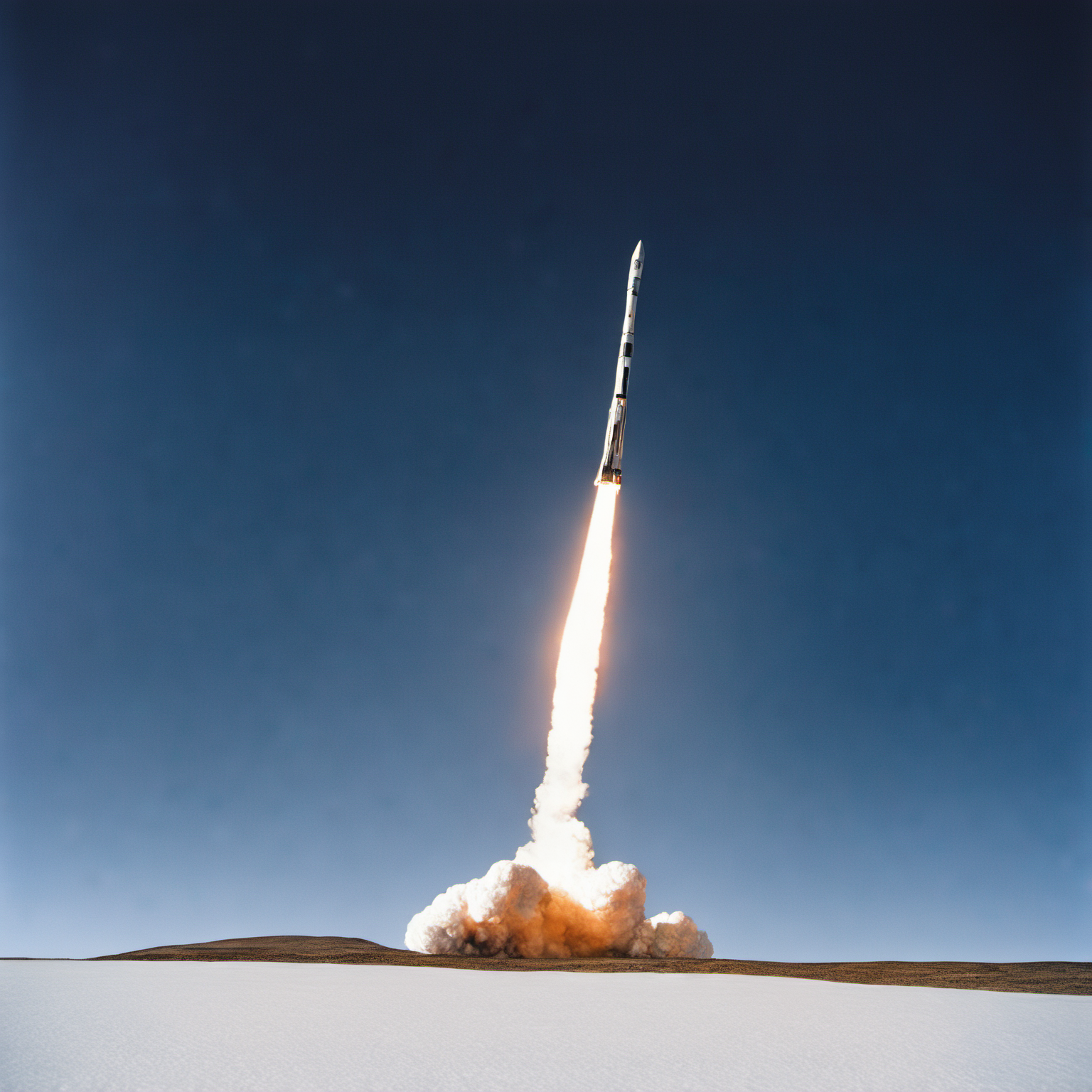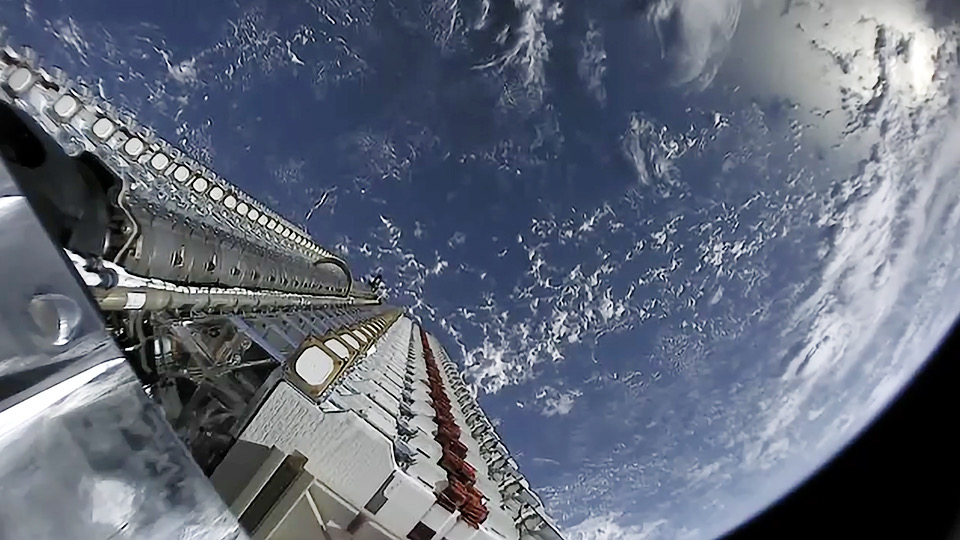· space brief · 5 min read
Space Brief 31 Jan 2025
Today's brief covers advancements in satellite technology initiatives by the U.S. Space Force, geopolitical implications in maritime domains, and Sweden's significant military aid package. Additionally, we spotlight a historical satellite with modern implications.

📄Top Stories
The U.S. Space Force is enhancing its technological capabilities through a new accelerator program, while geopolitical dynamics shift with the UK advising against forcing Pacific Island nations into binary alliances. Sweden’s considerable military support to Ukraine highlights ongoing international defense collaborations amidst global tensions.
📰Detailed Coverage
U.S. Space Force Launches Prime Fusion Pilot Accelerator
The U.S. Space Force’s Rapid Capabilities Office (RCO) has selected 10 companies to participate in its inaugural Prime Fusion Pilot Accelerator, a program aimed at accelerating the development of advanced satellite technologies. This initiative is designed to streamline innovation to meet modern challenges in space security and operational efficiency. By fostering partnerships with private companies, the RCO aims to leverage commercial innovation in defense applications.
This program is a crucial step in maintaining the technological edge in satellite operations and defense systems, potentially impacting satellite tracking and deployment strategies. For more detailed insights on satellite capabilities in this context, explore our web app’s advanced features.
Read the full story: SpaceNews
Geopolitical Implications of Maritime Trade
Rear Admiral James Parkin from the UK’s Royal Navy has vocalized concerns about the pressure on Pacific Island nations to choose alliances between the U.S. or China. Highlighting the intricate web of global maritime trade, Parkin suggests an inclusive approach to international relations. This stance is crucial as maritime and space domains increasingly intersect, influencing satellite communications and navigation routes essential for trade.
The remarks emphasize the strategic importance of sea routes, which are closely monitored and enhanced through satellite imaging and communication systems.
Read the full story: Breaking Defense
Sweden’s Strategic Support to Ukraine
Sweden has announced a $1.2 billion military aid package to Ukraine, which includes drones, missiles, and naval assets, as part of a broader international effort to support the country amidst geopolitical tensions. This package is seen not only as a strategic defense enhancement for Ukraine but also as a response to Russian military dynamics in the region.
Such support underscores the critical role advanced military technologies and satellites play in reconnaissance and defense strategies, highlighting the importance of tracking multiple defense assets.
Read the full story: Breaking Defense
Pentagon’s Potential $200 Billion Extra Budget Analysis
Senator Roger Wicker has proposed an additional $200 billion in defense funding, which experts like John Ferrari of the American Enterprise Institute are analyzing for its potential allocation. This extra budget could enhance capabilities across various military domains, including satellite deployments and enhancements.
With an increased budget, tracking, deploying, and maintaining defense satellites can see significant advancements, impacting operational readiness and global satellite networks.
Read the full story: Breaking Defense
🛰️Satellite Spotlight
- Satellite Name: TIMATION 1
- NORAD ID: 02847
- Launch Date: 1967-05-31
- Mission: Navigation
- Orbit: Inclination: 69.9634°, Period: 102.66 mins, Eccentricity: Slight
- Operator: NRL
- Fun Fact: TIMATION 1 was part of the early efforts to develop precise time and navigation systems in space, paving the way for the GPS technology we rely on today.
Current TLE Data:
1 02847U 67053E 25030.53316105 .00000447 00000+0 32476-3 0 9995
2 02847 69.9634 215.9130 0006662 336.3174 23.7627 14.02674995943705Track this satellite in real-time on our web app: Track TIMATION 1
🚀Upcoming Space Launches
February 1
- SpaceX Falcon 9:
- Starlink Group 11-4 from Vandenberg Space Force Base, CA, USA (22:48 UTC) A batch of satellites for the Starlink mega-constellation—SpaceX’s project for space-based Internet communication system.
February 2
- Mitsubishi Heavy Industries H3-22:
- Michibiki 6 (QZS-6) from Tanegashima Space Center, Japan (08:30 UTC) QZSS is a Japanese satellite navigation system operating from inclined, elliptical geosynchronous orbits to provide optimal visibility in urban and mountainous areas.
February 3
- SpaceX Falcon 9:
- Starlink Group 12-3 from Cape Canaveral SFS, FL, USA (08:54 UTC) A batch of satellites for the Starlink mega-constellation—SpaceX’s project for space-based Internet communication system.
- Rocket Lab Electron:
- IoT 4 You and Me (Kinéis 16-20) from Rocket Lab Launch Complex 1, Mahia Peninsula, New Zealand (20:43 UTC) Fourth batch of five satellites for the French Kinéis IoT constellation designed to operate with 25 nanosatellites.
- SpaceX Falcon 9:
- WorldView Legion 5 & 6 from Kennedy Space Center, FL, USA (23:32 UTC) WorldView Legion is a constellation of Earth observation satellites by Maxar, planned to consist of 6 satellites providing 30 cm-class resolution.
February 4
- Blue Origin New Shepard:
- NS-29 from Corn Ranch, Van Horn, TX, USA (15:30 UTC) NS-29 will simulate the Moon’s gravity and fly 30 payloads focused on testing lunar-related technologies. The flight will test six lunar technology areas with support from NASA.
February 11
- China Aerospace Science and Technology Corporation Long March 8A:
- Demo Flight from Wenchang Space Launch Site, People’s Republic of China (09:53 UTC) Demonstration flight of the Long March 8A rocket with upgraded engines and a new second stage. Payload is TBD.
February 26
- SpaceX Falcon 9:
- Lunar Trailblazer & Nova-C IM-2 from Kennedy Space Center, FL, USA (00:00 UTC) This is the second Nova-C mission carrying NASA’s PRIME-1 payload, a demonstration of in-situ resource utilization on the Moon.
- Arianespace Ariane 62:
- CSO-3 from Guiana Space Centre, French Guiana (16:24 UTC) The CSO-3 satellite is the third high-resolution optical imaging satellite for the French military.
February 27
- SpaceX Falcon 9:
- SPHEREx & PUNCH from Vandenberg Space Force Base, CA, USA (00:00 UTC) SPHEREx is a two-year mission to survey the sky in the near-infrared light and will search for essential molecules. PUNCH will focus on the Sun’s corona and solar wind.
Note: Launch dates and times are subject to change due to technical or weather considerations.

Maurice Stellarski




